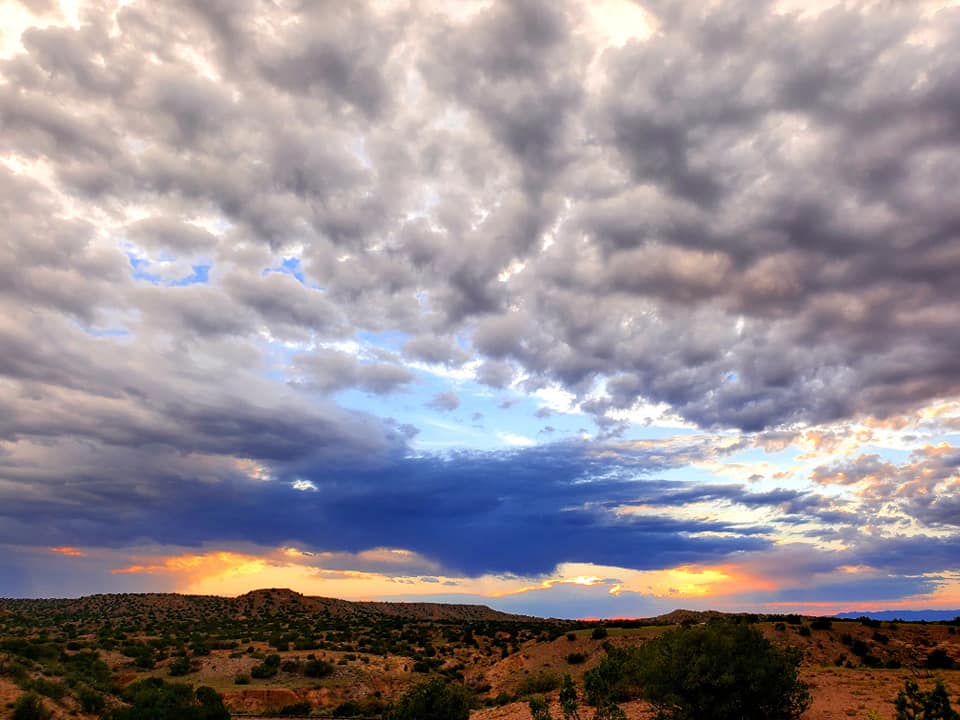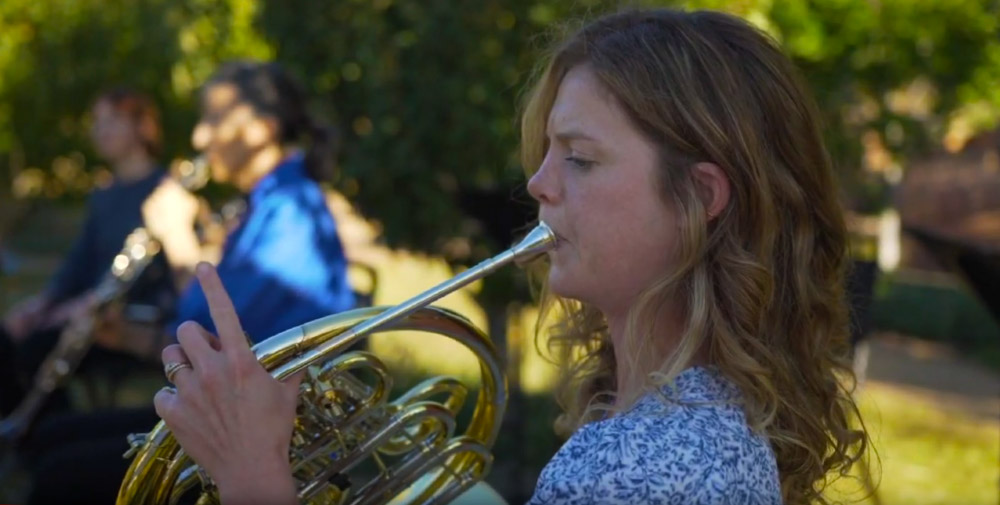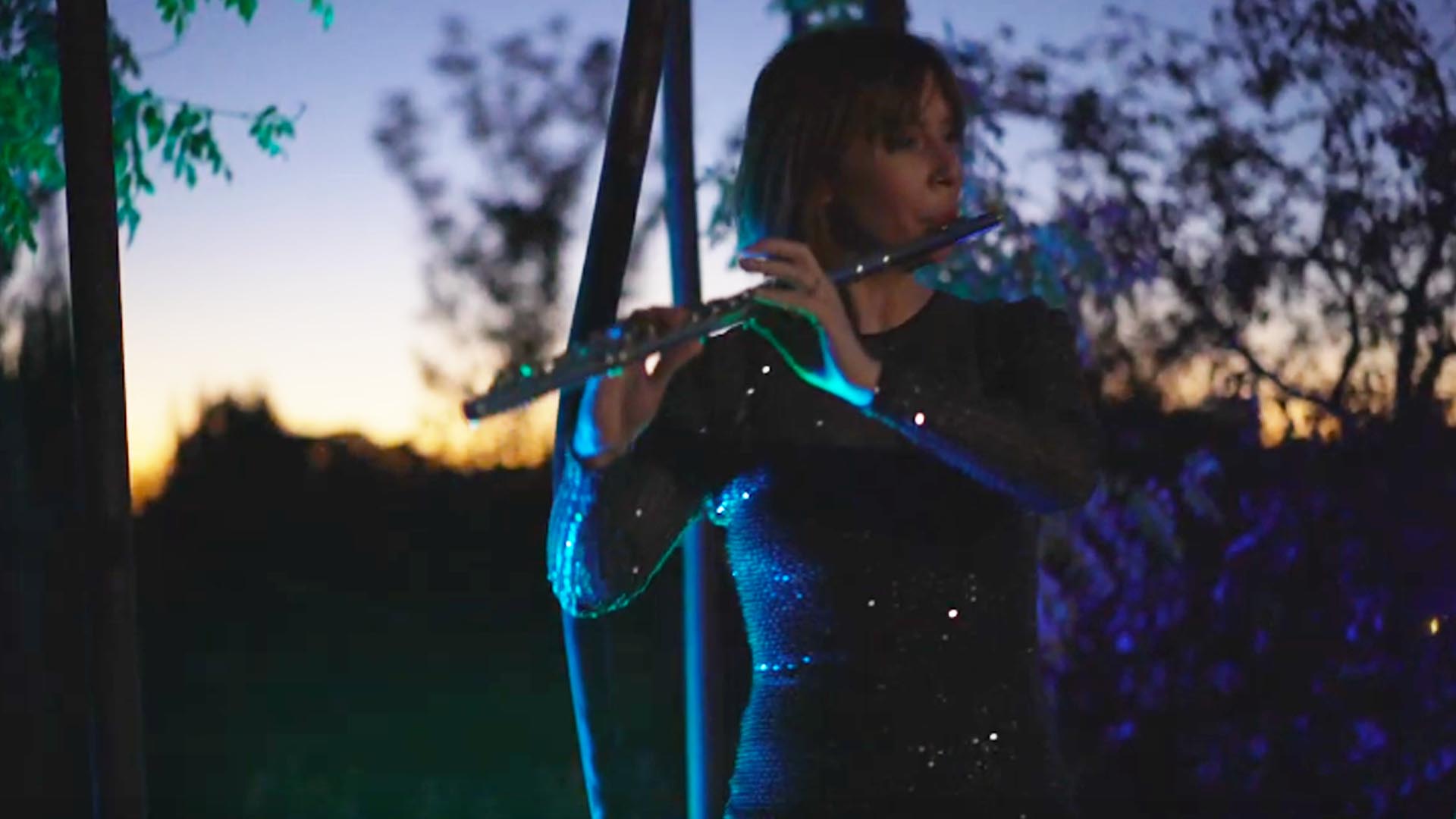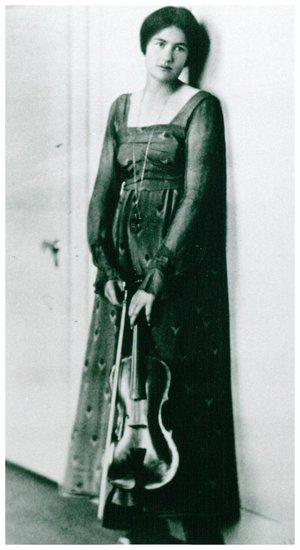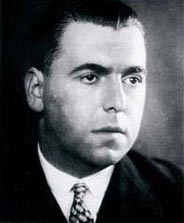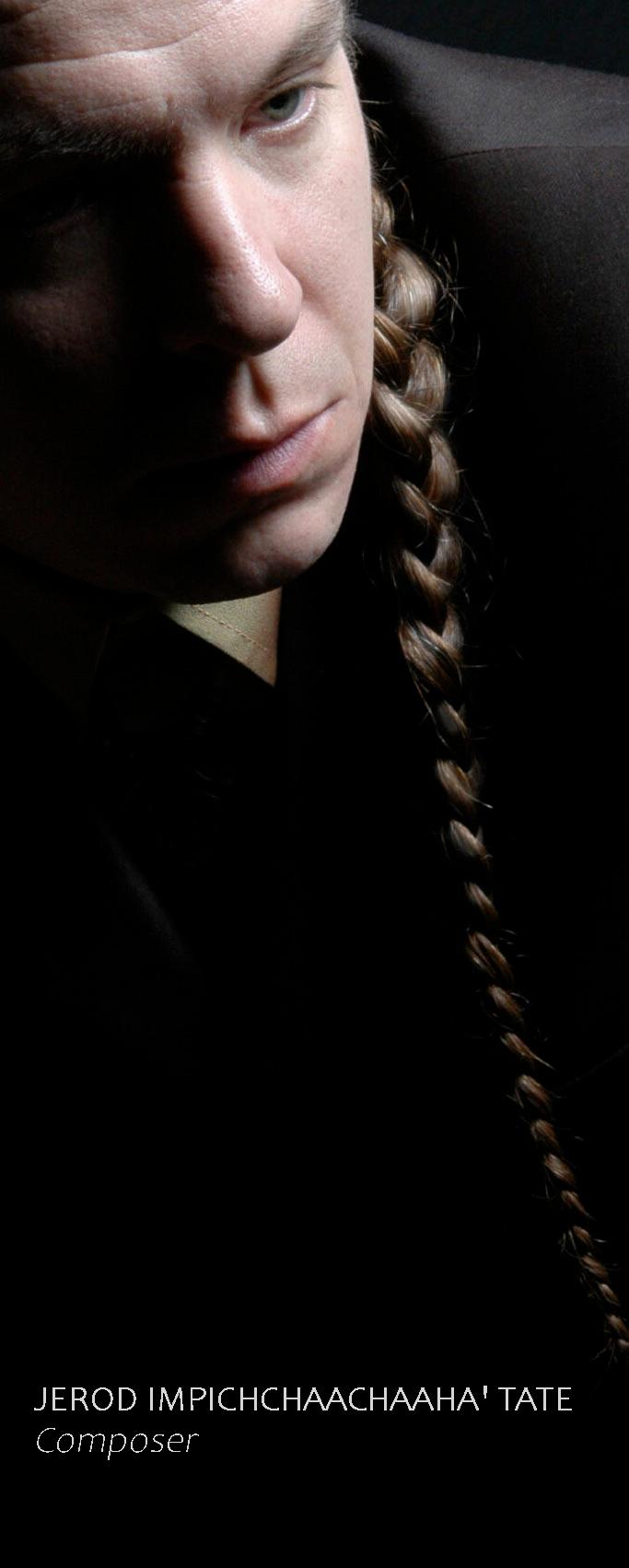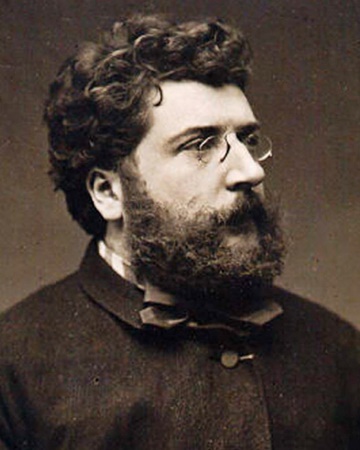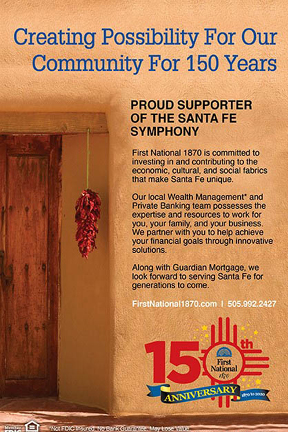
PROGRAM NOTES
Messiah
George Frideric Handel (1685-1750)
Overture
Pastoral
Messiah was commissioned by the Lord Lieutenant of Dublin and was an enormous success at its premiere performance in 1742, but it fell flat the same year in London. Only after it had been revised and presented in concert for the benefit of the Foundling Hospital in London (which continued to make over £600 at each of its annual benefit performances) did it take off on the way to its current popularity. But nothing boosted the work so much as its adoption every Christmas by traditional English civic choral societies, in which “casts of thousands” continue to belt out the choruses that at its premiere comprised only 32 singers accompanied by 33 instrumentalists.
Despite the fact that Messiah presents the joyous news for Christians of the birth, sacrifice and resurrection of Jesus, the subject matter as a whole is a somber one. Handel’s Overture to this great oratorio reflects this mood. The Baroque period maintained a solid belief in the “affect” of music, of its ability to modify and even control the emotions of the performer or listener. It was during this period that the idea of major=happy, minor=sad was firmly established. Handel’s Overture is unusual in that within its conventional formal structure – a slow section followed by a fugal Allegro – it retains the minor mode throughout.
Contrast this with the instrumental Pastorale in Part I, a musical portrait of the simple shepherds gathering around the manger and a reminder of Christ as The Good Shepherd. In its lilting 12/8 time, the melody is supported by a drone in imitation of the rural bagpipe common since before “music history.”
—Program Note buy Wordpros
Cello Suite No. 1 in G Major, BWV 1007
J.S. Bach (1685-1759)
Prelude
Menuets I & II
Gigue
Johann Sebastian Bach is not known as an innovator, regardless of how magnificent his music may be. Concertos, dance suites, organ and keyboard solos, cantatas, trio sonatas and solo instrumental sonatas with harpsichord accompaniment were all common genres throughout Europe. Even sonatas and suites for high-pitched unaccompanied solo instruments were prevalent--but not works for cello. In fact, we know of only one composer other than Bach, Domenico Gabrielli (1659-1690), who wrote 7 ricercari (or fugues) for unaccompanied cello--which suggests that Bach, in his subtle way, was indeed an innovator.
The actual date of compositions of the Six Suites for Unaccompanied Cello is not known, but they are thought to have postdated the Six Solo Violin Sonatas and Partitas, which may have spurred Bach to try his hand at a companion set for a bass instrument.
All of the unaccompanied suites are expansions of the conventional five-movement Baroque dance suite (Prelude and consisting of a stately Allemande, followed by a flowing, rapid Courante, a slow Sarabande and ending with a Gigue, a fast dance in triple time). Composers routinely added additional dances, many originating in the French ballet. Originating in the 16th century, by Bach's time these dances had lost their association with the ballroom, with only the opening rhythmic patterns surviving. In Suite No. 1, the optional movements are two Minuets.
In the Cello Suites, as in the Violin Suites, arpeggios, melodic figurations and double stops create the effect of complete harmonies and counterpoint, as well as the ability of the listeners to supply in their heads a fuller harmonic context.
Bach’s six Cello Suites were popular during his lifetime but, like much of his music, were largely forgotten or ignored after his death. It fell to famous cellist Pablo Casals (1876-1973) to bring them to the attention of the public, after he had discovered an old copy of the Suites in a thrift shop in Barcelona.
—Program Note buy Wordpros
White Christmas
Irving Berlin (1888-1989)
Arr. by Alan Civil
Born in Russia, Israel Baline came to this country with his family at age five. He began writing songs as a boy and published his first at age nineteen. Four years later, under the name Irving Berlin, he achieved fame (and wealth) with the song Alexander’s Ragtime Band and went on to become one of the most characteristic American voices of the 20th century: Estimates of the number of songs he wrote run as high as 1500. Many of these—songs like God Bless America, There’s No Business Like Show Business, and This Is the Army, Mr. Jones—have become part of the American national identity.
White Christmas was originally part of Berlin’s score for the 1942 film Holiday Inn, sung by Bing Crosby. The mellow sound of Crosby’s voice was perfectly suited to this song, with its warm but relaxed sentiment, and White Christmas—in its many reincarnations—has become an inescapable way we think of that holiday. Its popularity has never been in doubt: White Christmas won the Academy Award as the best song of 1942.
—Program Note by Eric Bromberger
Bésame Mucho (Kiss Me A Lot)
Consuelo Velásquez (1916-2005)
Arranged for four horns by Arturo Pantaleon/Gabriel Soto
Mexican songwriter and pianist Consuelo Velásquez started her career as a classical pianist, but quickly switched to writing popular songs. She had many hits to her name, but none greater than Bésame Mucho, a bolero, composed probably in 1933. According to Velásquez, the idea came to her while watching a couple kissing in the street (before she herself was ever kissed), the music inspired by an aria from Enrique Granados' opera Goyescas. Published in 1940 and recorded soon thereafter, it became an instant hit, especially after a 1943 recording by Jimmy Dorsey and his orchestra. During the war, it became a daily “must play” on the Army radio stations.
—Program Note buy Wordpros
Canonic Sonatas—Sonata No. 2
Georg Philipp Telemann (1681-1767
Spiritoso
Larghetto
Allegro Assai
Like many of his colleagues during the Baroque, Telemann was an extraordinarily prolific composer (over 600 instrumental works alone). His instrumental magnum opuses were the three volumes titled Tafelmusik (dinner music) published in 1733. Each volume contained one each of an overture, orchestral suite, concerto, quartet, trio and sonata. They were meant as entertainment at banquets, although today they are usually performed in concerts.
Telemann, who was an extrovert and an avid traveler, was highly respected throughout Europe. He was considered a greater composer than J.S. Bach and in 1722 was the first choice of the Elders of Leipzig for the position of city cantor. Only after Telemann turned the offer down did Bach get that position.
In the first edition of these Sonatas in 1738, appears the following statement: "Six Canons or Sonatas for two German flutes or two violins composed by George Philip Telemann". The title illustrates the practice of leaving some latitude in the choice of instruments, providing more opportunity for sales to the flourishing amateur market in Hamburg during that time.
The Sonatas are all multi-movement works in which the two instruments play at the unison, in the first two movements, a measure apart. In the final movement, the second voice enters at a distance of one and three-quarters measures. Listeners familiar with simple, short canons like “Row, row, row your boat” may wonder how to avoid harmonic monotony for an extended piece of music. Telemann’s solution is twofold: to employ more than one theme with a pause between melodies so that the second player can “catch up,” then begin with the new canonic theme, often in a different key; the second is to keep the melodic patterns, articulation and ornamentation varied phrase by phrase within the same harmonic context.
—Program Note buy Wordpros
Concerto Grosso in G Minor No. 8 "Christmas Concerto," op.6
Arcangelo Corelli (1653-1713)
Mystery and controversy surround much of the life of Arcangelo Corelli. Born of a wealthy landowning family, he studied music at the cathedral of San Petronio in Bologna, a site with an illustrious pedigree of musicians and composers. Corelli is thought to have traveled extensively in Europe during his youth, but exactly where and when is by no means clear.
In 1687, famous as violinist and composer, he settled in Rome as the protégé of Cardinal Benedetto Pamphili, and later of the 22-year-old Cardinal Pietro Ottoboni, in whose palace he spent the rest of his life. Corelli became teacher and mentor to an entire generation of violinists and composers, and the Monday night musical soirées he led in the Cardinal’s palace became known throughout Europe. He was a great friend of the most famous painters of the day and accumulated a large art collection, mostly gifts. Handel, during his sojourn in Italy, befriended him and admired him greatly but commented that Corelli liked nothing better than to save money and look at pictures he had not paid for. He died rich and famous, beloved by all for his mild disposition and friendly attitude despite his wealth and position.
The Baroque period was a particularly fluid time in the development of musical styles and genres. Preceding Vivaldi, Bach and Handel by only a generation, Corelli was in the forefront of developing the concerto as a genre. There was no set number of movements or prescribed relationship between soloists and accompaniment, as is reflected in this work. In large part because of the boom in music publishing, Corelli’s music was disseminated throughout Europe and his works served as models for the following generation.
Except for a few works, most of them spurious, Corelli published all his compositions in six volumes of 12 works each. The first five sets were violin and trio sonatas; Opus 6 is a set of twelve concerti grossi, in which he set two violins and a viola (or cello) against a larger string ensemble.
The Concerto No. 8 is the best known of the set. Written for the mass in celebration of the nativity, it is subtitled Fatto per la notte di Natale, but this has not restricted its performance to Christmas Eve. The Concerto has no true movements per se, rather six short sections of new music that flow together with brief transitional passages. The the last, a Pastorale: Largo, is its most famous. But Corelli marked it “ad libitum” (at will), meaning that this lovely movement could be omitted. It is doubtful that anyone ever does. The Pastorale does not refer to some bucolic scene, but to the shepherds who gathered at the manger. The music becomes joyous, with long-held notes imitating the drone of bagpipes.
—Program Note buy Wordpros
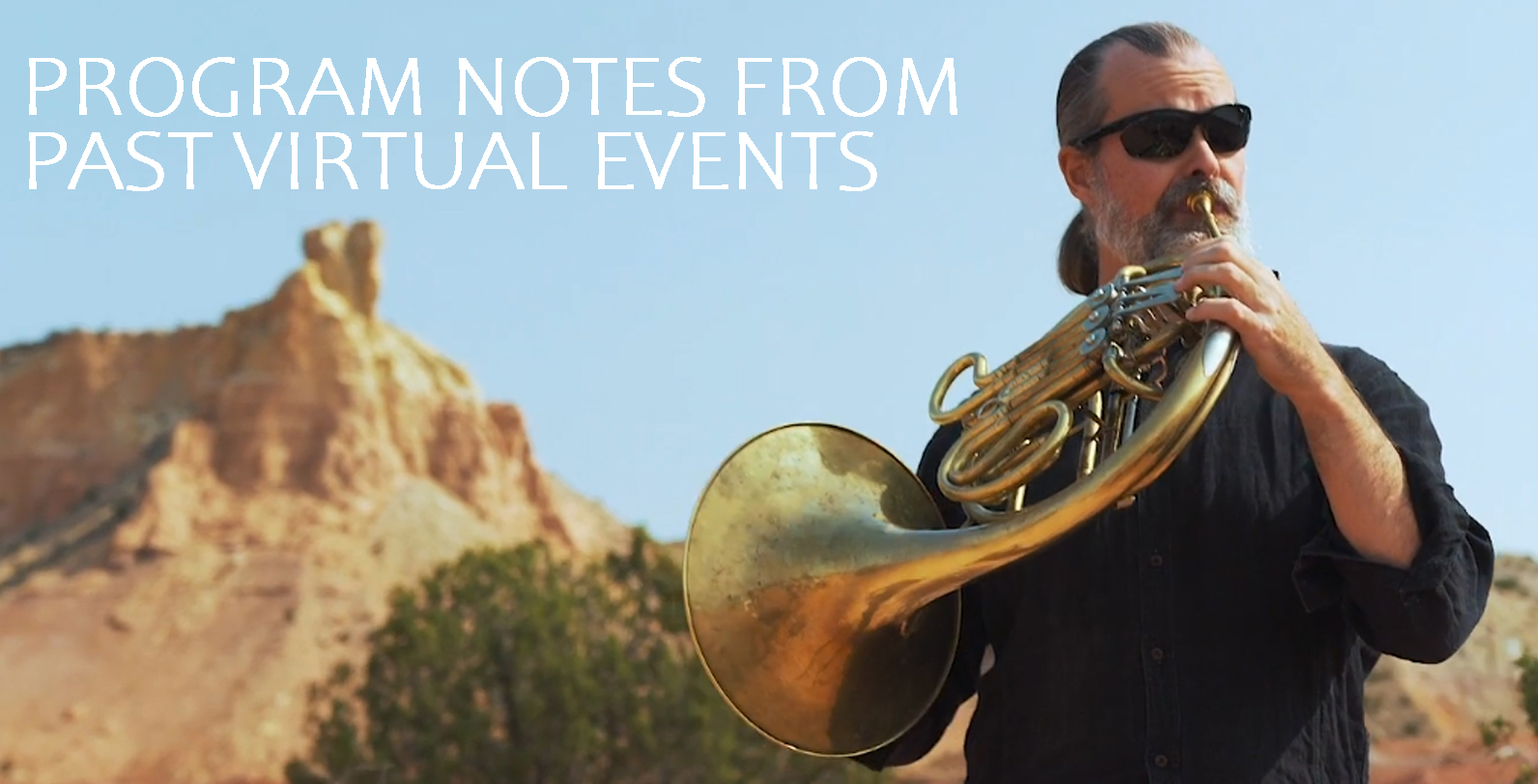

NATIVE WINDS | Nov 22 @ 4:00 PM
_____________________________________________________
LUDWIG VAN BEETHOVEN
This chamber-music version of Beethoven’s Symphony No. 6, first movement, is based on the following edition: Chamber Arrangements of Beethoven's Symphonies, Part 3: Symphonies Nos. 2, 4, and 6 Arranged for Large Ensembles, edited by Nancy November. Recent Researches in the Music of the Nineteenth and Early Twentieth Centuries, vol. 79. Middleton, WI: A-R Editions, Inc., 2020. Used with permission. www.areditions.com
Native Winds was commissioned by the Wheelwright Museum of the American Indian and the New Mexico Woodwind Quintet.
PROGRAM NOTES

LUDWIG VAN BEETHOVEN (1770-1827)
Symphony No. 6 in F Major,
op.68, “Pastoral”
First Movement
Transcribed for String Sextet
by Michael Gotthard Fischer
While many of Beethoven’s symphonies broke new ground, the Sixth is both innovative – as it prefigures the Romantic tone poems – and traditional. Beethoven and his audience were readily able to attach literary, emotional or extra-musical concepts to music. His Wellington’s Victory was the latest in a long tradition of musical battles dating back to the Renaissance. And of course, there were musical models for many of the images in the Sixth Symphony – Vivaldi’s Four Seasons and bucolic Christmas pastorals with bagpipe drones, as in Handel’s Messiah or Corelli’s Christmas Concerto – not to mention an extensive vocabulary of rhetorical musical figures from the Baroque, bird calls and other perennial tone painting devices.
But Beethoven seemed to be searching for something different, an ideal way to portray and “express” nature. "Any painting, if it is carried too far in instrumental music, loses expressive quality...The overall content, consisting of more feelings than of tone paintings, will be recognized even without further description," he wrote in his sketchbook while working on the Sixth Symphony. This and other notes to himself as he worked reveal the Symphony as more than a sentimental outpouring. Here was another of the composer’s creative challenges to be met in the context of his trajectory of self-fulfillment as an artist.
Beethoven wrote more words about the Sixth Symphony than about any of his other compositions. He provided descriptive titles to each of the five movements, while at the same time commenting that the music was self-explanatory and needed no titles. The first movement, “Cheerful feelings awakened on arriving in the country,” builds up none of the intense tension so common in Beethoven's first movements, being instead an unhurried study in tranquility.
The gentle atmosphere of the Sixth Symphony is in sharp contrast to the high-voltage intensity of the Fifth, completed only a few weeks earlier. Although Beethoven fought, quarreled and argued with everyone--friend, foe or patron--with nature he was at peace.
With the rise of the middle-class and the accompanying leisure time in the 19th century, amateur home music making became a major source of entertainment. Before the invention of the phonograph and radio, transcription of operatic and orchestral works for small ensemble was the way to acquaint the affluent public with the newest in music. Providing these transcriptions became big business. Beethoven finished the symphony and premiered it in 1808, and Fischer published his transcription two years later.
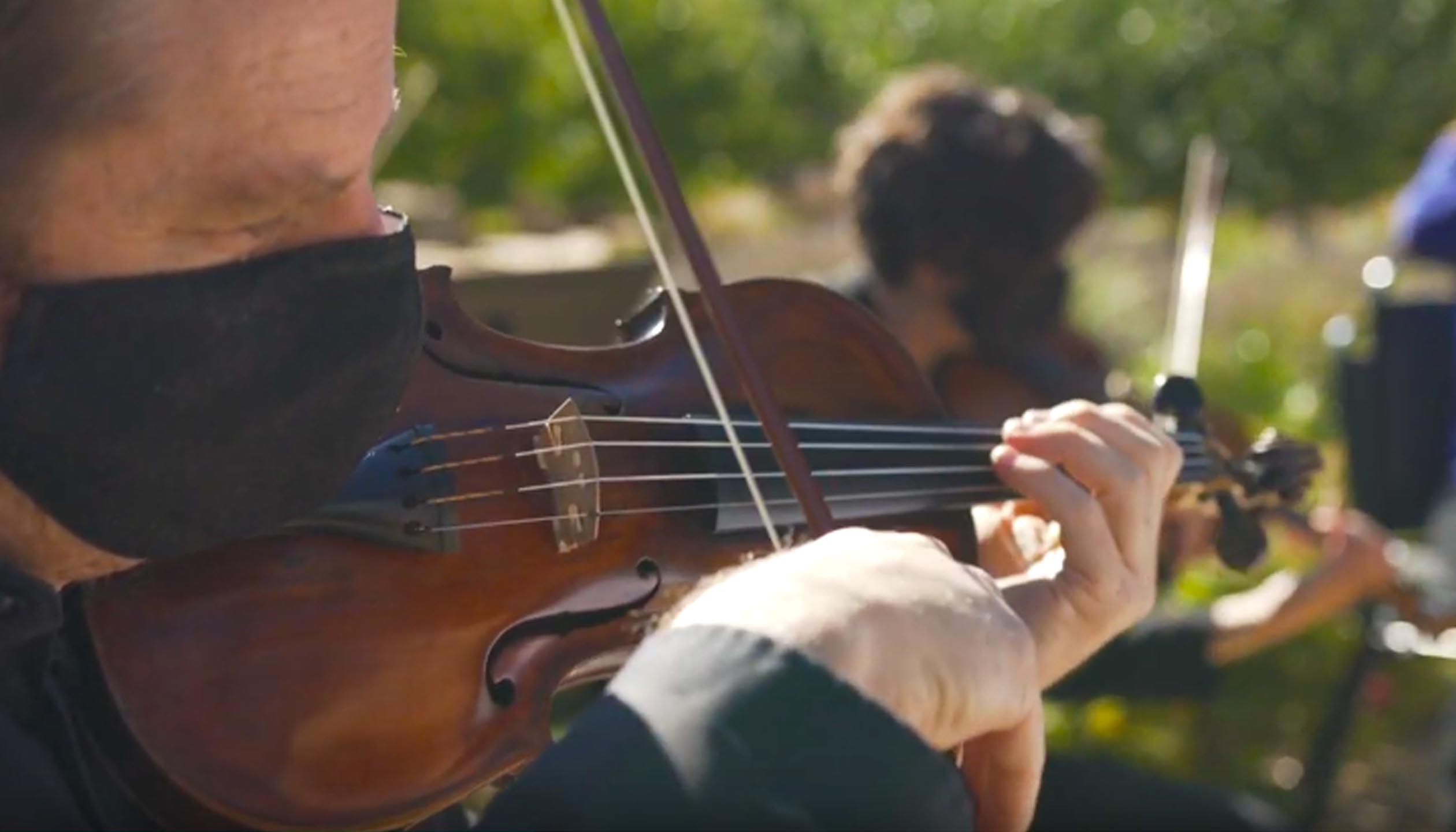
BRENDA M. ROMERO (1949- )
Native Winds for Woodwind Quintet
Ethnomusicologist and composer Brenda M. Romero is a graduate of the University of New Mexico in Albuquerque and the University of California in Los Angeles. She was on the faculty of the College of Music of the University of Colorado in Boulder for 33 years until her retirement. She currently does extensive community work and is working on an opera set in New Mexico in the 1940s.
Romero composed Native Winds for woodwind quintet with Mexican bird whistle in 1987, while working toward a doctorate in ethnomusicology at UCLA. It was commissioned by the New Mexico Woodwind Quintet and the Wheelwright Museum of the American Indian in Santa Fe. She writes about the genesis of Native Winds:
“My 1987 woodwind quintet, Native Winds, commemorates the Battle at Wounded Knee in 1890, quoting melodies I taught to students for the Ghost Dance Play at the Navajo Pinehill Highschool in May 1986. As a little girl growing up in northern New Mexico, I had recurring dreams of warrior guardians on the hillside cliffs just west of us. To begin, the horn announces their presence, then the morning bird appears. Foreshadowing change, the final bars restructure the opening rhythmic figure.”
LEONE SINIGAGLIA (1868-1944)
Romanze for Horn and String Quartet, op.3
Italian composer Leone Sinigaglia was an avid collector of popular songs from the country around Turin, his native city. He arranged many of them for voice and piano in the style of the German Lied, an art he learned while spending two years in Vienna. They were published in six volumes by Breitkopf & Härtel.
His hobby was mountaineering, and he published two books on his climbs in the Dolomites, for which he became famous.
Sinigaglia composed the Romanze, op. 3 in 1889 for horn and string quartet, but it is frequently performed with string orchestra.

FRANZ JOSEPH HAYDN (1732-1809)
String Quartet No. 53 in D Major,
op.64, No. 5, Hob.III:63,“The Lark”
First Movement
The 25 string quartets Franz Joseph Haydn composed during the 1780s were not part of his duties as Kapellmeister to Prince Nicolaus Esterházy; rather they were self-motivated and meant for the general public. By the end of the decade, Haydn’s reputation had spread throughout Europe and his music in great demand. He composed the six quartets of Op. 64 during 1790, the last two after the death of Prince Nicolaus. The death of his music-loving patron and the accession to the title by his musically indifferent son fortuitously coincided with the sudden arrival in Vienna of the impresario Johann Peter Salomon – the Sol Hurok of the late 18th century. Salomon was attempting to lure the composer to become the star of his London concert series, an invention for the newly affluent middle class. It took Haydn no time to agree, and by the end of December he was on his way to London.
Of course, Haydn brought with him his latest chamber music creation, but on hearing the six quartets performed in London, he realized that the last two, No.5 and 6, were the weightiest of the set and placed them at the front for publication by Bland in London in 1792. In those days before copyright and with Haydn’s immense reputation, it is not surprising that within two years they were re-published in every major city in Europe. The publication in Vienna by a new firm, Magazin de musique, issued them in the chronological order that has prevailed to this day.
The nickname “The Lark” was given to this Quartet because of the soaring violin melody above the staccato accompaniment of its opening.
JEROD IMPICHCHAACHAAHA' TATE (1968-)
Talowa Hiloha (Thunder Song) for Solo Timpani
The son of a Chickasaw father and an Irish mother, Jerod Impichchaachaaha’ Tate grew up in a family professionally involved in music, dance and theatre. He received his training as a pianist and composer at Northwestern University and the Cleveland Conservatory of Music, but his mother commissioned his first composition, Winter Moons, a ballet that explores traditions of the tribes from the Northern Plains and Rockies.
Tate, who has been inspired in ways of combining ethnic and Classical traditions through the music of Bela Bartók, writes:
"I didn't mix my identities of being a classically trained musician and being an American Indian. I never saw that there was even a possible relationship between those two until I started composing. And that's when they came together in a way that made me feel just wonderful.”
Tate composed Talowa Hiloha in 1997 for timpanist Alex Orfaly, currently with the Stockton Symphony. He explains: "The Chickasaw word for thunder and lightning is Heloha and, in history, Chickasaw people believed thunderstorms were the beloved, or holy people at war above the clouds. In an attempt to show their bravery and fearlessness of death, warriors would shoot their guns into the air during thunderstorms. This work is an homage to those old ways."
WOLFGANG AMADEUS MOZART (1756-1791)
Quintet in E Flat Major
For Horn Violin, two Violas & Cello, K. 407
The name Ignaz Leutgeb does not ring a bell with most music lovers. A poorly educated cheese-monger born in Salzburg ca. 1745, he was also a superb horn player. In 1770, he was appointed to the orchestra of the Archbishop of Salzburg where he became a close friend of Mozart and the butt of the latter’s verbal and practical jokes. Leutgeb was also a terrible spendthrift and managed to borrow money from Mozart’s father, which he never repaid. In 1777, he moved to Vienna, where he opened a cheese shop while continuing to give horn recitals. In 1781, after Mozart moved to Vienna, he renewed his friendship with Leutgeb. His friend’s virtuoso playing and need for new repertoire inspired Mozart in 1782 to write the Quintet for Horn and Strings, K.407, as well as his four horn concertos.
The Quintet, with its unusual string complement, is perhaps a modified string quintet, with a horn in place of the first violin. It has the characteristics of a horn concerto in miniature, the strings functioning primarily as accompaniment. Mozart had a thorough grasp of the character of the 18th-century natural (valveless) horn – called Waldhorn in German – which symbolized the sounds of the forest and the hunt.
In the opening Allegro, Mozart uses the different sonorities of the horn and strings to create lyrical-dramatic contrasts, with the strings mostly following and repeating the horn phrases. The second movement, Andante, uses legato playing to minimize the difference between the instruments and create a true dialogue. As a result, the strings, especially the violin, have a more equal role.
The high spirits of the Allegro finale recall the joking inscriptions Mozart wrote on the manuscripts for Leutgeb, which were often meant to confuse. On the manuscript of the second Horn Concerto, Mozart wrote: “Wolfgang Amadé Mozart hat sich über den Leutgeb, Esel, Ochs und Narrerbarmt. ( Wolfgang Amadeus Mozart takes pity on Leutgeb, ass, ox and simpleton...)”. The movement opens with a melody which is the same as at the start of the Andante, but with a totally different rhythm and tempo. Since Mozart was familiar with Leutgeb’s outstanding abilities on the horn, the composer demanded extraordinary feats of virtuosity.
SHULAMIT RAN (1949 - )
East Wind for Solo Flute
The music of Israeli-American composer and pianist Shulamit Ran is a fusion of Western and Middle Eastern modes and sonorities. Ran studied at the Mannes College of Music. She joined the University of Chicago Department of Music in 1973, where she was the Andre MacLeash Distinguished Service Professor, retiring in 2015. Her 1990 Symphony, commissioned by the Philadelphia Orchestra, garnered the Pulitzer Prize for Music in 1991.
Composed in 1987, East Wind refers to a passage in the Book of Genesis in which Pharaoh has a dream forecasting the east wind that subsequently, in Exodus, brings the plague of locusts and parts the Red Sea.
This challenging piece recreates the improvisatory nature of the Middle Eastern style of flute playing, including such extended techniques as pitch bends, key clicks, and the percussive “spit tongue” articulation, and non-metered rhythms with angular melodies.
Program Notes by Wordpros
.jpg)

Ensembles Royales
PROGRAM
JOHANN SEBASTIAN BACH
Trio Sonata in G Major
Carla Kountoupes, Violin; Nicolle Maniaci, Violin; and Dana Winograd, Cello
strong>GEORGE FRIDERIC HANDEL / JOHN HALVERSON</strong
Passacaglia: Duo for Violin and Cello
Dana Winograd, Cello and Carla Kountoupes, Violin
MARCELLE SOULAGE
Pastorale for Oboe and Harp, op.15
Anne Eisfeller, Harp, and Elaine Heltman, Oboe
IGNATIUS SANCHO
3 Minuets
Alexis Corbin, Steel Pan
Hovey Corbin, Marimba
MORGAN LEWIS
How High is the Moon
Alexis Corbin, Steel Pan, and Hovey Corbin, Marimba
JACQUES IBERT
Entre’acte
Anne Eisfeller, Harp, and Elaine Heltman, Oboe
BERNARD ANDRÈS
Excerpts from Algues
Anne Eisfeller, Harp, and Elaine Heltman, Oboe
CARLOS SANTANA/TOM COSTER
Europa (Earth’s Cry Heaven’s Smile)
Alexis Corbin, Steel Pan, and Hovey Corbin, Marimba
JUAN TIZOL
Caravan
Alexis Corbin, Steel Pan, and Hovey Corbin, Marimba
ASTOR PANTALEÓN PIAZZOLLA
Oblivion
Anne Eisfeller, Harp, and Elaine Heltman, Oboe
MAURICE RAVEL
Sonata for Violin and Cello: Tres Vif
Dana Winograd, Cello, and Carla Kountoupes, Violin
PROGRAM NOTES
Trio Sonata, BWV 1038
Johann Sebastian Bach (1685-1750)
Today, members of the Santa Fe Symphony are implementing a well-established practice during the Baroque period, as well as bringing to light one of those issues that keep musicologists employed: Performance practice and authenticity.
The easiest one to unravel is the matter of performance practice. First, there’s the definition of a trio sonata. The trio sonata is a chamber work for four players, two high-tessitura instruments to carry the melodic lines, two players, the continuo, to support the harmonic structure of the piece. The word “continuo” is a single entity consisting of a viola da gamba or cello plus a harpsichord to fill in the harmonies, but the two players do not always play the same notes. The cello can contribute significantly to the contrapuntal texture while the harpsichord plays block chords, usually only when the harmony changes. This performance, however, involves only three players, dropping the keyboard altogether. The three major instruments, however, clearly delineate the harmonic structure without the keyboard enhancement. In addition, this sonata was originally(?) written for flute and violin. No problem. Baroque composers regularly mixed and matched ensembles according to the forces at hand. Bach himself transcribed a whole bunch of trio sonatas for organ. Chamber music was occasional music meant to accompany events like dinner parties, so you used what you had. A lot of Bach’s instrumental works saw light of day in a coffeehouse.
Authenticity is a little trickier. The latest edition of the Neue Bach Ausgabe, the authority amassing and commenting on the latest in Bach scholarship, cites this sonata as probably not by Bach – or at least not by Johann Sebastian (the best guess being Carl Philip Emmanuel). And to make things even more complicated, the continuo part is exactly the same as that of the Violin Sonata, BWV 1021! It was first published about a century after it was composed, and we can’t go by the handwriting since C.P.E. copied oodles of his father’s compositions.
So, no matter who wrote it and for what combination of instruments are immaterial for you to enjoy this lovely work.
Passacaglia
George Frideric Handel (1685-1759)
Transcribed for Violin and Viola (or cello) by Johan Halvorsen
The passacaglia (or chaconne) is an early baroque dance and instrumental form in which a short motive in the bass, known as a “ground,” is continually repeated as the upper parts weave contrapuntal variations over it. Its combination of rigidity and fancy has kept it popular with composers to the present day. Once associated with laments, the passacaglia has often been used to convey a mood of melancholy (Brahms Symphony No. 4) or powerful tragedy (the Passacaglia from Benjamin Britten’s opera Peter Grimes).
George Frideric Handel’s only passacaglia occurs as the last movement of his Harpsichord Suite No. 7 in G minor, HWV 432, published in 1720.
In 1894, Norwegian violinist, composer and conductor Johan Halvorsen (1864-1935) arranged and elaborated Handel’s Passacaglia for Violin and Viola. The transcription owes less to Handel than to Paganini; for although at first Halvorsen adheres closely to Handel’s first five variations, he then introduces an entire set of new variations with challenging demands on both string players.
Pastorale, Op. 15
Marcelle Soulage (1894-1970)
One of the advantages of having an entire stable of orchestra players to mix and match into diverse chamber ensembles is to bring to light music that one would seldom hear in concert.
There is a group of music stores on Paris’s Left Bank crammed with decades of sheet music. These include everything from exercises to recital and competition pieces for every Western instrument by composers who taught at the Conservatoire. Marcelle Fanny Henriette Soulage composed the Pastorale for oboe and harp (or piano) in 1920; we do not know for whom or for what purpose.
French pianist and composer Soulage studied at the Conservatoire, where she became professor of music theory in 1949. Her works are primarily for chamber ensemble, piano and voice.

Three Minuets
Ignatius Sancho (729- 1770)
The British Library website introduces Ignatius Sancho as:
“Writer, composer, shopkeeper and abolitionist, Ignatius Sancho was celebrated in the late 18th-century as a man of letters, a social reformer and an acute observer of English life.”
We might add that he was a British precursor of the American former slave and abolitionist Frederick Douglass.
It is not clear whether Sancho was born in Africa or on a slave ship when Britain was one of the world’s most notorious slave trading nations; its American colonists weren’t even dreaming of revolution. His mother died when he was an infant, and his father committed suicide rather than be sold into slavery. Sancho was taken to England and worked as a slave to three sisters in Greenwich.
His fortunes turned when he caught the attention of the Duke of Montague, who took the boy under his wing and taught him to read. When the Duke died, Sancho ran away from the sisters and persuaded the duke’s widow to hire him as a butler. While working for the Montague family, Sancho studied poetry, literature and music. The Montagues also had his portrait painted by Thomas Gainsborough, the premier society portraitist. Novelist and abolitionist Laurence Sterne befriended him and incorporated his story into his novel Tristram Shandy, and he was the subject of a biography.
After 20 years, he left the Montague household with an annuity plus a year’s salary that allowed him to open a grocery store in Westminster. There, he became a well-known cultural figure, and freely mingled in “Society,” as the British say. And as an independent male property owner, he was the first African to vote in a British general election.
Sancho wrote many letters on abolition (published posthumously), two plays, four collections of music, Minuets, Cotilions and Country Dances, published posthumously in 1775, and a treatise on music theory. We do not know when the dances were composed, although probably at the time when Sancho was in the employ of the Montague family. Parties and balls were ubiquitous among the British upper classes and gentry, and it might have been a novelty for the family to showcase their talented butler – and later valet. If that sounds condescending, consider the fact that all musicians of the period were regarded as servants.
Much occasional music in the Baroque and Classical periods could be performed on any combination of instruments. This transcription for marimba might have also been acceptable – if the instrument had been invented yet.

How High the Moon
Morgan Lewis (1906-1968)
Born in Connecticut, composer Morgan Lewis wrote jazz songs and music for Broadway shows. He composed How High the Moon for the 1940 Broadway review Two for the Show, with lyrics by Nancy Hamilton. It became one of Ella Fitzgerald's signature songs.
Entr’acte
Jacques Ibert (1890-1962)
Jacques Ibert was one of the most prolific and eclectic French composers of the last century, leaving behind works in nearly every musical form. He considered music “The expression of an interior adventure.” His approach to composition could best be summed up in his own words: “All systems are valid, provided that one derives music from them.” He adopted a particular style only when it suited his purpose for the composition at hand. Consequently, he never joined any of the movements so popular in France in the 1920s and ‘30s.
During World War I when Ibert served in the French navy, a Mediterranean cruise inspired his most popular work, Escales (Ports of Call). From 1937 to 1960, he served as director of the French Academy in Rome.
Ibert composed Entr’acte in 1935 as part of the incidental music for El Medico de su Honra (The Physician of his Honor), a play by the Spanish seventeenth-century playwright Pedro Calderón de la Barca. Originally for flute or violin and harp or guitar, it has been performed by many other duo combinations. Like so much French music of the last century, the work suggests Spanish Flamenco harmonies, but the flute and the absence of strumming in the guitar gives it a more ethereal quality than the music of dark Spanish bars and cafés.
Selections from Igues
Bernard Andrès (1941 - )
French educator and harpist Bernard Andrès graduated in harp from the Paris Conservatory, and in 1969 became solo harpist for the Philharmonic Orchestra of Radio France. He started composing at age 8, his music always emphasizing melody although frequently spiked with atonal tension. In the process, he developed his own notation method for harp music. He is one of the most popular contemporary composers of harp music, and his educational books are required texts for harp students world-wide.
In addition to solo and ensemble harp music, Andrès has composed vocal and chamber music with harp, and Le Seigneur des Amin – a Concerto for Harp and Orchestra.
Algues is seven duets for harp and oboe, violin or flute. Andrés uses some unusual techniques, including using the fingernails for xylophone sounds. His harmonic palette reveals the influence of Debussy.
Europa (Earth's Cry Heaven's Smile)
Carlos Santana (1947 - )
Tom Coster (1941 - )
Mexican guitarist Carlos Santana formed and led the Santana rock band in the 1960s and '70s, and American composer and keyboardist Tom Coster played for many years in Santana's band.
First recorded and released in 1976, Europa is considered Santana's most beautiful instrumental composition. The origin of its melodies is however in dispute, and the final version was written with the assistance of Tom Coster.

Caravan
Juan Tizol (1900-1984)
Puerto-Rican trombonist and composer Juan Tizol started his musical education under his uncle, the director of the municipal band and symphony of San Juan. He started playing the violin, but soon switched to the valve trombone, his signature instrument. He joined a band that traveled as stowaways to Washington where he first met Duke Ellington. He joined Ellington's band in 1929 and became a band composer, introducing Latin sound into the band’s repertory.
Tizol composed Caravan, a jazz standard, in 1936, and it has never left the repertoire. It has been used by Woody Allen, Steven Soderbergh and Damien Chazelle in their movies.
Oblivión
Astor Piazolla (1921-1902)
Astor Piazzolla’s name has been inseparably associated with the tango. During the Depression, Piazzolla’s family moved to New York, where he studied piano and the bandoneón, a type of concertina with a 38-button keyboard that had become the central instrument in the tango ensembles of his native Argentina. After a stint in Paris, studying composition with no less an eminence that Nadia Boulanger, Piazzolla returned to Argentina to form his first Tango Octet and later his renowned Tango Quintet, made up of the bandoneón, violin, piano, electric guitar and bass.
Influenced by his studies in Paris and classical forms, Piazzolla aimed his compositions a cut above the traditional tangos. No longer dance music, they became concert music, although for the nightclub rather than the concert hall. Nevertheless, the psychological intensity and sophistication of his music so infuriated the traditionalists that Piazzolla was repeatedly physically assaulted and even threatened with a gun to his head during a radio broadcast.
Piazzolla in turn has inspired such jazz artists as Jerry Mulligan and Chick Corea. His tangos have been arranged for classical violinist Gidon Kramer and for the renown eclectic Kronos Quartet.
When you write for something as restricted geographically as a bandoneón ensemble, transcriptions are inevitable. Oblivión has been transcribed for many combinations, including a piano trio. It is a dreamy, slow tango, expressing longing and pain.
Sonata for Violin and Cello
Movement II: Très vif
Maurice Ravel (1875-1937)
The death of Debussy in 1918 threw a pall over the musical world of Paris. In 1920, the journal La Revue Musicale published a special commemorative issue in memory of the composer. In it appeared a collection of pieces by Debussy's contemporaries, including Igor Stravinsky and Béla Bartók, under the collective title Le Tombeau de Debussy (Memorial to Debussy). Ravel’s contribution to the issue was a duo for violin and cello, which, two years later, became the first movement of the Sonata for Violin and Cello. Ravel also dedicated the Sonata to Debussy's memory.
Listeners acquainted with the music of Zoltán Kodály and Béla Bartók will not fail to notice a distinctly Hungarian flavor in the second movement. It is not clear to what extent Ravel became familiar with the works of his two Hungarian contemporaries, but their influence is palpable in this Sonata.
The second movement begins with the two instruments sharing the melody by playing alternate notes. The movement rolls out several more themes, the first harking back to the Debussy Quartet. The model for the others, to judge from their unusual modal melodies and complex rhythms, appears to be more Hungarian than French.
—Program Notes By Joseph & Elizabeth Kahn
PROGRAM
Reinhold Gliére (1875-1956)From 8 Duos for Violin and Cello, Op. 39
No. 3: Berceuse “Cradle Song”
No. 2: Gavotte
Dana Winograd, Cello
Joel Becktell, Cello
Melinda Mack, Cello
Lisa Collins, Cello
James Holland, Cello
Rebecca Clarke (1886–1979)
From Two Movements for String Quartet
No. 1: Comodo e Amabile “Comfortable and Lovable”
Gabriela da Silva Fogo, Violin
Carla Kountoupes, Violin
Christine Rancier, Viola
Melinda Mack, Cello
Erwin Schulhoff (1894-1942)
Concertino for Flute, Viola and Double Bass
Jesse Tatum, Flute
Kimberly Fredenburgh, Viola
Toby Vigneau, Double Bass
Claude Debussy (1862–1918)
From Préludes, Book I
No. 8: La fille aux cheveux de lin
“The Girl with Flaxen Hair”
Arr. for Five Cellos by Laszlo Varga
Dana Winograd, Cello
Joel Becktell, Cello
Melinda Mack, Cello
Lisa Collins, Cello
James Holland, Cello
Matt Walker
Squaretet
Dana Winograd, Cello
Joel Becktell, Cello
Melinda Mack, Cello
Lisa Collins, Cello
James Holland, Cello
Jerod Impichchaachaaha Tate (1968– )
Pisachi “Reveal” for String Quartet
Gabriela da Silva Fogo, Violin
Carla Kountoupes, Violin
Christine Rancier, Viola
Melinda Mack, Cello
Georges Bizet (1838-1875)
Carmen Fantasy
Arr. by Werner Thomas/Mifune for Five Cellos

PROGRAM
AARON COPLAND
Fanfare for the Common Man for solo trumpet
Brynn Marchiando, Solo Trumpet
JESSIE MONTGOMERY
Strum: Music for Strings
David Felberg, Violin; Nicolle Maniaci, Violin; Kimberly Fredenburgh,Viola; Dana Winograd, Cello; and Terry Pruitt, Bass
DAVID AMRAM
Duet from Three Songs for Marlboro for Horn and Cello
Dana Winograd, Cello, and Jeffrey Rogers, Horn
ANTONÍN LEOPOLD DVOŘÁK
String Quintet No. 2 in G Major, op.77, B.49 | Allegro con fuoco
David Felberg, Violin; Nicolle Maniaci, Violin; Kimberly Fredenburgh, Viola; Dana Winograd, Cello; Terry Pruitt, Bass
OLIVER MESSIAEN
Appel Interstellaire from Des canyons aux étoiles
Jeffrey Rogers, Solo Horn
J.S. BACH
Cello Suite No. 3 in C Major
Sarabande
Dana Winograd, Cello
MICHAEL MAULDIN
Canyon Light for Woodwind Quintet
Morning Prayers
River Music
Shimmering Heat
Sunset
Jesse Tatum, Flute; Elaine Heltman, Oboe; Lori Lovato, Clarinet; Stefanie Przybylska, Bassoon; Jeffrey Rogers, Horn
DR. MARISA YOUNGS
Eclipse
Brynn Marchiando, Solo Trumpet
.png)
PROGRAM NOTES
AARON COPLAND (1900-1990)
Fanfare for the Common Man for Solo Trumpet
Aaron Copland is one of the few American composers who actually developed and changed the language of classical music in this country. After exploring modes of expression imported from Europe—including atonality and serial techniques—he discovered the open octaves, fifths and fourths. Copland saw these “open” intervals as metaphors for the vastness of the American landscape with its millions of acres of undeveloped land. He built his most famous works, Billy the Kid, Rodeo, and, of course, Appalachian Spring around these intervals. The Copland “American” sound is now iconic, riffed upon and imitated in film, television and commercials (think Marlboro Country).
Constructed entirely of these most elementary intervals, unadorned with supporting harmonies, Fanfare for the Common Man takes on a further metaphoric meaning to honor the millions of Americans who gave their lives for this country.
During World War II, many conductors and music presenters commissioned composers to write inspiring works reflecting the spirit of the times. In 1942 Eugene Goossens, conductor of the Cincinnati Orchestra, commissioned several American composers to write fanfares to commemorate various aspects of the nation at war. Copland’s Fanfare for the Common Man was scored for brass and percussion; the composer wrote: “[It] honors the man who did no deeds of heroism on the battlefield, but shared the labors, sorrows and hopes of those who strove for victory.”
Not wanting a good tune go to waste, Copland reused the Fanfare theme to great effect as the introduction to the finale of his Symphony No. 3.
JESSIE OMNTGOMERY (1981- )
Strum
Jessie Montgomery composed Strum in 2006 for string quartet and revised it in 2012 for string orchestra for the Sphinx Organization, the Detroit-based social justice ensemble dedicated to transforming lives through the power of diversity in the arts. The work was featured on The Black Composer Speaks concert series by Fulcrum Point New Music Project, which explores different voices within the generations of Black American composers, ranging from impressionistic to pop-inspired minimalism to free jazz improv.
Complex pizzicato lines on all instruments, sometimes as complex as in a Bartok quartet, other times recalling banjo strumming, provide a rhythmic base upon which Montgomery hangs bursts of fiddle music.
A review of her debut album, Strum, Music for Strings, exemplifies Montgomery's dedication to Sphinx’s founding principles. “The album combines classical chamber music with elements of folk music, spirituals, improvisation, poetry and politics, crafting a unique and insightful new-music perspective on the cross-cultural intersections of American history.”
Montgomery is a violinist, composer and educator with a graduate degree in Composition and Multimedia from New York University. She is a member of the Catalyst Quartet, and toured with cellist Yo-Yo Ma’s Silk Road Ensemble. She performs and composes regularly for the Sphinx Organization.
DAVID AMRAM (1930 - )
No. 3: Theme and Variations
Three Songs for Marlboro for Horn and Cello
Hearing a work for a novel combination of instruments is a rare and exciting opportunity. While the range of the horn and cello is similar, their distinct tone quality is quite different, analogous to two operatic baritones portraying distinct characters – sometimes in agreeable dialogue, sometimes in conflict. The texture is largely contrapuntal – often so free that the two instruments seem not to be paying attention to each other. Amram brings out the separate personalities of the two instruments contrasting hunting-horn motives with pizzicato passages and harmonics that extend the range of the cello.
Composer and French horn player David Amram has spent his career bridging the gap between jazz and Classical music. He began his professional life 1951 as a French horn player in the National Symphony Orchestra. He moved to New York City in 1955 and played French horn in the legendary jazz bands of Charles Mingus, Dizzy Gillespie, Lionel Hampton and Oscar Pettiford. In 1966 Leonard Bernstein appointed him as the first musician-in-residence of the New York Philharmonic. Amram composed extensively in all fields, including opera and film, including Splendor in the Grass and The Manchurian Candidate. He also wrote scores for Arthur Miller plays and for 25 productions of New York's Shakespeare Festival. He has been called multicultural and multi-musical.
Amram composed Three Songs for Marlboro in 1961 at Marlboro, at the request of hornist Myron Bloom.
ANTONÍN DVOŘÁK (1841-1904)
String Quintet No. 2 in G major, Op. 77
Allegro con fuoco
Antonín Dvořák composed a large volume of chamber music for various instrument combinations that was mostly neglected after his death. It has only been revived in the latter part of the last century. Among these works is the Quintet in C major for the unusual combination of two violins, viola, cello and double bass. It started life in 1875 as opus 18, but Dvořák revised it in 1888 and Simrock published it with the new opus number to make it sound as if it were a completely new work.
With the inclusion of the double bass, Dvořák used mostly the higher range of the cello, making for a rich middle range.
OLIVIER MESSIAEN (1908-1992)
Appel interstellaire (Call to the Stars) from Canyons aux étoiles (Canyons to the Stars)
A Catholic by religion and a mystic by nature, French composer and organist Olivier Messiaen linked his music intimately to his beliefs and visions. He claimed that the three cornerstones of his music were first, “the theological truths of the Catholic faith … perhaps the only aspect of my work that I will not regret at the hour of my death;” second, “the greatest theme of human love” referring to the medieval legend of Tristan and Iseult; and third, the sounds of nature.
"Appel interstellaire" for solo horn is the first part of Des Canyons aux étoiles, a twelve-movement orchestral work commissioned in 1971 to celebrate the bicentennial of the Declaration of Independence. But Messiaen had composed Appel a few months earlier that year in memory of a young French composer. In preparation for the commission, Messiaen traveled to Utah where the beauty and majesty of Bryce Canyon captivated his imagination and resonated with his mystical aesthetic.
Messiaen prefaces the score with two quotations from the Hebrew Scriptures:
“He heals their broken hearts
and binds up their wounds
He reckoned the number of the stars
To each he gave its name.”
(Psalm 147, v. 3 and 4)
“Earth, do not cover my blood, and let there be no resting place for my outcry!” Job, ch. 16, v. 18
This virtuosic piece requires the performer to employ complex techniques unusual for the instrument, symbolizing the infinite ways one calls out to God: flutter-tonguing, closed notes, glissandos, and faintly-sounded oscillations produced with the keys half-closed. Even the extended silences seem to be waiting for an answer that never comes. And because this is Messiaen, we hear the calls of two birds—the Chinese thrush and the cnyon wren.
JOHANN SEBASTIAN BACH (1685-1750)
Suite No. 3 in C major for Solo Cello, BWV 1009
No. 4: Sarabande
Bach’s six Cello Suites were popular during his lifetime but, like much of his music, were largely forgotten or ignored after his death. It fell to famous cellist Pablo Casals (1876-1973) to bring the Cello Suites to the attention of the public, after he had discovered an old copy of the Suites in a thrift shop in Barcelona. Today, these suites are the gold standard, and every self-respecting cellist practices and performs them.
All six Suites are expansions of the typical four-movement Baroque dance suite, starting with a Prelude and consisting of a stately Allemande, followed by a flowing rapid Courante, a slow Sarabande and ending with a Gigue, a fast dance in triple time. Additional dances, mostly originating from French ballet were routinely added. Originating in the sixteenth century, by Bach's time these dances had lost their association with the ballroom, with only the opening rhythmic patterns surviving.
MICHAEL MAULDIN (Born 1947)
Canyon Light
Composed in 1989 on commission from the New Mexico Woodwind Quintet, Canyon Light was inspired by a river rafting trip with Michael Mauldin’s two young sons in Moab, Utah.
"My sons must have thought their father insane for taking them there in August. But the cooling white-water, the colors of the canyons and child’s play on sandy beaches made it a treasured experience for us all... The energy we get from that beauty is real. Not just a fleeting mood, it sustains mind, body and spirit."
Despite the evocative titles for the four musical tableaux, Mauldin employs little tone painting. Each section, however, is based on a different scale, or mode, neither tonal nor atonal.
- “Morning Prayers:” Composed for the upper winds, "Morning Prayers" is based on the octatonic scale, most familiar in the Russian works of Stravinsky.
- “River Music:” Mauldin brings in the bassoon and horn, but the movement is dominated by delicate solos for flute and oboe.
- “Shimmering Heat: "This slow movement has a hypnotic effect with its limited range and repeated motive.
- In “Sunset:” An ostinato in rapid triplets underlies most of the final movement.
JESSIE MONTGOMERY (1981- )
Strum
Jessie Montgomery composed Strum in 2006 for string quartet and revised it in 2012 for string orchestra for the Sphinx Organization, the Detroit-based social justice ensemble dedicated to transforming lives through the power of diversity in the arts. The work was featured on The Black Composer Speaks concert series by Fulcrum Point New Music Project, which explores different voices within the generations of Black American composers, ranging from impressionistic to pop-inspired minimalism to free jazz improv.
Complex pizzicato lines on all instruments, sometimes as complex as in a Bartok quartet, other times recalling banjo strumming, provide a rhythmic base upon which Montgomery hangs bursts of fiddle music.
A review of her debut album, Strum, Music for Strings, exemplifies Montgomery's dedication to Sphinx’s founding principles. “The album combines classical chamber music with elements of folk music, spirituals, improvisation, poetry and politics, crafting a unique and insightful new-music perspective on the cross-cultural intersections of American history.”
Montgomery is a violinist, composer and educator with a graduate degree in Composition and Multimedia from New York University. She is a member of the Catalyst Quartet, and toured with cellist Yo-Yo Ma’s Silk Road Ensemble. She performs and composes regularly for the Sphinx Organization.
DAVID AMRAM (1930 - )
No. 3: Theme and Variations
Three Songs for Marlboro for Horn and Cello
Hearing a work for a novel combination of instruments is a rare and exciting opportunity. While the range of the horn and cello is similar, their distinct tone quality is quite different, analogous to two operatic baritones portraying distinct characters – sometimes in agreeable dialogue, sometimes in conflict. The texture is largely contrapuntal – often so free that the two instruments seem not to be paying attention to each other. Amram brings out the separate personalities of the two instruments contrasting hunting-horn motives with pizzicato passages and harmonics that extend the range of the cello.
Composer and French horn player David Amram has spent his career bridging the gap between jazz and Classical music. He began his professional life 1951 as a French horn player in the National Symphony Orchestra. He moved to New York City in 1955 and played French horn in the legendary jazz bands of Charles Mingus, Dizzy Gillespie, Lionel Hampton and Oscar Pettiford. In 1966 Leonard Bernstein appointed him as the first musician-in-residence of the New York Philharmonic. Amram composed extensively in all fields, including opera and film, including Splendor in the Grass and The Manchurian Candidate. He also wrote scores for Arthur Miller plays and for 25 productions of New York's Shakespeare Festival. He has been called multicultural and multi-musical.
Amram composed Three Songs for Marlboro in 1961 at Marlboro, at the request of hornist Myron Bloom.
ANTONÍN DVOŘÁK (1841-1904)
String Quintet No. 2 in G major, Op. 77
Allegro con fuoco
Antonín Dvořák composed a large volume of chamber music for various instrument combinations that was mostly neglected after his death. It has only been revived in the latter part of the last century. Among these works is the Quintet in C major for the unusual combination of two violins, viola, cello and double bass. It started life in 1875 as opus 18, but Dvořák revised it in 1888 and Simrock published it with the new opus number to make it sound as if it were a completely new work.
With the inclusion of the double bass, Dvořák used mostly the higher range of the cello, making for a rich middle range.
OLIVIER MESSIAEN (1908-1992)
Appel interstellaire (Call to the Stars) from Canyons aux étoiles (Canyons to the Stars)
A Catholic by religion and a mystic by nature, French composer and organist Olivier Messiaen linked his music intimately to his beliefs and visions. He claimed that the three cornerstones of his music were first, “the theological truths of the Catholic faith...perhaps the only aspect of my work that I will not regret at the hour of my death;” second, “the greatest theme of human love” referring to the medieval legend of Tristan and Iseult; and third, the sounds of nature.
Appel interstellaire" for solo horn is the first part of Des Canyons aux étoiles, a twelve-movement orchestral work commissioned in 1971 to celebrate the bicentennial of the Declaration of Independence. But Messiaen had composed Appel a few months earlier that year in memory of a young French composer. In preparation for the commission, Messiaen traveled to Utah where the beauty and majesty of Bryce Canyon captivated his imagination and resonated with his mystical aesthetic.
Messiaen prefaces the score with two quotations from the Hebrew Scriptures:
“He heals their broken hearts
and binds up their wounds
He reckoned the number of the stars
To each he gave its name.”
(Psalm 147, v. 3 and 4)
“Earth, do not cover my blood, and let there be no resting place for my outcry!” Job, ch. 16, v. 18
This virtuosic piece requires the performer to employ complex techniques unusual for the instrument, symbolizing the infinite ways one calls out to God: flutter-tonguing, closed notes, glissandos, and faintly-sounded oscillations produced with the keys half-closed. Even the extended silences seem to be waiting for an answer that never comes. And because this is Messiaen, we hear the calls of two birds—the Chinese thrush and the cnyon wren.
JOHANN SEBASTIAN BACH (1685-1750)
Suite No. 3 in C major for Solo Cello, BWV 1009
No. 4: Sarabande
Bach’s six Cello Suites were popular during his lifetime but, like much of his music, were largely forgotten or ignored after his death. It fell to famous cellist Pablo Casals (1876-1973) to bring the Cello Suites to the attention of the public, after he had discovered an old copy of the Suites in a thrift shop in Barcelona. Today, these suites are the gold standard, and every self-respecting cellist practices and performs them.
All six Suites are expansions of the typical four-movement Baroque dance suite, starting with a Prelude and consisting of a stately Allemande, followed by a flowing rapid Courante, a slow Sarabande and ending with a Gigue, a fast dance in triple time. Additional dances, mostly originating from French ballet were routinely added. Originating in the sixteenth century, by Bach's time these dances had lost their association with the ballroom, with only the opening rhythmic patterns surviving.
MICHAEL MAULDIN (Born 1947)
Canyon Light
Composed in 1989 on commission from the New Mexico Woodwind Quintet, Canyon Light was inspired by a river rafting trip with Michael Mauldin’s two young sons in Moab, Utah.
"My sons must have thought their father insane for taking them there in August. But the cooling white-water, the colors of the canyons and child’s play on sandy beaches made it a treasured experience for us all... The energy we get from that beauty is real. Not just a fleeting mood, it sustains mind, body and spirit."
Despite the evocative titles for the four musical tableaux, Mauldin employs little tone painting. Each section, however, is based on a different scale, or mode, neither tonal nor atonal.
- “Morning Prayers:” Composed for the upper winds, "Morning Prayers" is based on the octatonic scale, most familiar in the Russian works of Stravinsky.
- “River Music:” Mauldin brings in the bassoon and horn, but the movement is dominated by delicate solos for flute and oboe.
- “Shimmering Heat: "This slow movement has a hypnotic effect with its limited range and repeated motive.
- In “Sunset:” An ostinato in rapid triplets underlies most of the final movement.
A graduate in piano and music education from Washburn University and the University of Colorado, Texas-born Michael Mauldin fell in love with New Mexico at a young age, and has lived there since graduation, teaching music, performing and composing.
DR. MARISA YOUNGS
Eclipse for Solo Trumpet
Only since the Baroque period has chromaticism become a part of the Western musical vocabulary, opening up from eight-note modes into our system of twelve-note tonal harmony thereby expanding the range of musical expression. Dissonances formed with half steps were taboo and the tritone (ex. C – F#) was call Diabolus in musica (the devil in music).
In Eclipse, Marissa Younge has used the negative reputation of chromatic intervals as a symbol. Youngs writes about Eclipse: "Eclipse is meant to evoke the eerie sense of beauty and unease experienced during a lunar eclipse. The motivic content is based on an initial descending half step, which is transformed throughout the work and symbolizes temporary darkness. The lyrical melody is often disrupted by sudden chromaticism and disjunct leaps, solidifying the feelings of fear and unrest many cultures associate with the astronomical event."
Trumpeter Marisa Youngs has a Doctorate of Musical Arts from the University of Kentucky. She teaches trumpet at Winthrop University in South Carolina.
Program notes by:
Joseph & Elizabeth Kahn
Wordpros@mindspring.com
www.wordprosmusic.com
A graduate in piano and music education from Washburn University and the University of Colorado, Texas-born Michael Mauldin fell in love with New Mexico at a young age, and has lived there since graduation, teaching music, performing and composing.
DR. MARISA YOUNGS
Eclipse for Solo Trumpet
Only since the Baroque period has chromaticism become a part of the Western musical vocabulary, opening up from eight-note modes into our system of twelve-note tonal harmony thereby expanding the range of musical expression. Dissonances formed with half steps were taboo and the tritone (ex. C – F#) was call Diabolus in musica (the devil in music).
In Eclipse, Marissa Younge has used the negative reputation of chromatic intervals as a symbol. Youngs writes about Eclipse: "Eclipse is meant to evoke the eerie sense of beauty and unease experienced during a lunar eclipse. The motivic content is based on an initial descending half step, which is transformed throughout the work and symbolizes temporary darkness. The lyrical melody is often disrupted by sudden chromaticism and disjunct leaps, solidifying the feelings of fear and unrest many cultures associate with the astronomical event."
Trumpeter Marisa Youngs has a Doctorate of Musical Arts from the University of Kentucky. She teaches trumpet at Winthrop University in South Carolina.
Program notes by Joseph & Elizabeth Kahn
.png)
- Upcoming Events
- About the Cover
- Virtual Concert Series Trailer
- Contact Us
- Board of Directors
- Executive Director
- Principal Conductor
- Choral Director
- Administrative Staff & Volunteers
- Symphony Supporters
- Musician Relief Fund
- Adopt-A-Musician
- Memberships
- Foundation for The Santa Fe Symphony
- Community & Learning
- Advertiser Index
- Past Events
